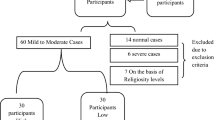Abstract
The purpose of this study is to analyze how immigrant youths’ experiences of collage art therapy were shown in their emotional changes. Research question is as follow: How do the emotional changes of immigrant youths, who participated in the collage group art therapy program, appear in their art works? For this end, 3 immigrant youths were chosen from a multicultural preliminary school. And they participated in 10 sessions of collage group art therapy. As a qualitative research, this study analyzed the cases on immigrant youths’ emotional growth, based on the participatory observation and interpretation of the symbols and components in their art works. The results were as follows: Components like symbols, meanings, individual conflict and desire, have positively changed throughout the whole sessions. Their early works showed negative symbols and passive actions as unconscious defense mechanism. Their mid-term works showed their concentration on art activities and dynamics with interest and creativity in art medium. Their late works showed positive symbols like achievement desire and adaptation to reality. Therefore, this research has significance in that it provides basic data of developing collage art therapy program for immigrant youths, implying the possibility of their positive adaptation to Korea.
Similar content being viewed by others
Explore related subjects
Discover the latest articles, news and stories from top researchers in related subjects.References
Ayres, L., Kavanaugh, K., & Knafl, K. A. (2016). Within-case and across-case approaches to qualitative data analysis. Qualitative Health Research, 13(6), 871–883.
Burk, R. E., & Provancher, M. A. (1972). Magazine picture collage as an evaluative technique. American Journal of Occupational Therapy, 26(1), 36–39.
Carlton, N. R. (2014). Digital culture and art therapy. The Arts in Psychotherapy, 41(1), 41–45.
Darewych, O. H., Carlton, N. R., & Farrugie, K. W. (2015). Digital technology use in art therapy with adults with developmental disabilities. Journal of Developmental Disabilities, 21(2), 95–102.
Diggs, L. A., Lubas, M., & De Leo, G. (2015). Use of technology and software applications for therapeutic collage making. International Journal of Art Therapy, 20(1), 2–13.
Jeong, Y. J. (2003). Understanding of art therapy: Theory and practice. Seoul: Hakjisa.
Jeong, Y. J. (2014). The characteristics of art and the therapeutic meaning of the creative process in art therapy. Korean Journal of Art Therapy, 23(5), 1221–1237.
Kim, M. J. (2011). Multicultural education for immigrant students. Journal of Education & Culture, 17(2), 55–76.
Kim, N.Y. (2015). A study on the legislation of art therapy: Approval of visual art therapy as a complementary and substitutional medical therapy and its institutionalization. Unpublished doctoral Dissertation. Dongguk University.
Kim, Y. S., Park, B. S., & Trang, P. T. H. (2012). A qualitative study on re-socialization experience of the immigrant youths with enculturation perspective. The Language and Culture, 8(3), 37–63.
Lee, E.J. (1997). A study on the breaking from the stagnancy of fine arts guidance for the higher grades in elementary school: Mainly through the collage’s technique. Unpublished master’s thesis. Korea National University of Education.
Lee, K. M. (2009). A research on the formal characteristics of collage expression of elementary students grouped by grade. Korean Journal of Art Therapy, 16(2), 171–188.
Mihailidis, A., Blunsden, S., Boger, J., Richards, B., Zutis, K., Young, L., & Hoey, J. (2010). Towards the development of a technology for art therapy and dementia: Definition of needs and design constraints. Arts in Psychotherapy, 37(4), 293–300.
Ministry of Education the Republic of Korea. (2017). Plan of multicultural education support. http://blog.naver.com/moeblog/220909378876. Accessed 7 August 2018.
Park, S.H. (2007). Group art treatment case study for broken family children's self-respect elevation. Unpublished master’s thesis. Jeonju University of Education.
Park, Y. S., Min, B. K., & Kim, U. C. (2002). Longitudinal study of adolescents' life-satisfaction: An analysis of social support and self-efficacy. Journal of Education & Culture, 8, 161–202.
Ryu, B. R., & Oh, S. B. (2012). An analysis of educational opportunities for and adaptation of immigrant youth. Multicultural Education Studies, 5(1), 29–50.
Ryu, G. W., Jeong, J. W., Kim, Y. S., Kim, H. B., & Oh, S. B. (2012). The understanding of qualitative research method. Seoul: Park-Young Books.
Sim, E.J. (2016). The effects of collage group art therapy program on depression of the elderly in care facilities. Unpublished master’s thesis. Pyeongtaek University.
Sugiura. (1994). Collage therapy. Tokyo: Mishima.
Wang, G.M. (2017), A case study on the collage art therapy for the migrant youth. Unpublished doctoral Dissertation. Inha University.
Wang, G. M., Kim, Y. S., & Kim, M. S. (2016). A case study on the emotional changes of immigrant youth participated in the collage group art therapy. The Journal of Learner-Centered Curriculum and Instruction., 16(11), 1017–1039.
Yang, K. M., & Jo, H. Y. (2012). The exploratory study of psycho-social adjustment of immigrant youth in Korea. Korean Journal of Youth Studies, 19(11), 195–224.
Yang, Y. J., & Lee, G. M. (2012). The effects of group art therapy program on acculturative stress of married migrant women. Korean Journal of Art Therapy, 19(5), 971–992.
Yin, R. K. (2003). Case study research design and methods. Thousand Oaks: Sage Publications.
Acknowledgements
This study was supported by the Ministry of Education the Republic of Korea and National Research of Korea (NRF-2017S1A5B4055802).
Author information
Authors and Affiliations
Corresponding author
Additional information
Publisher’s Note
Springer Nature remains neutral with regard to jurisdictional claims in published maps and institutional affiliations.
Rights and permissions
About this article
Cite this article
Wang, G., Kim, Y. & Oh, Y. A case study on the collage art therapy for immigrant youths. Educ Inf Technol 24, 1115–1129 (2019). https://doi.org/10.1007/s10639-018-9819-y
Received:
Accepted:
Published:
Issue Date:
DOI: https://doi.org/10.1007/s10639-018-9819-y




